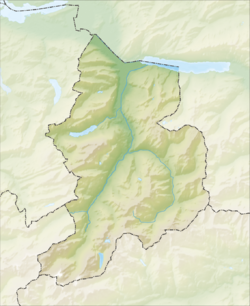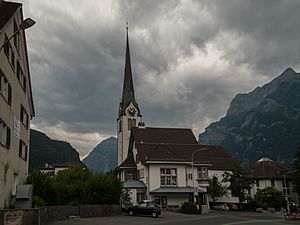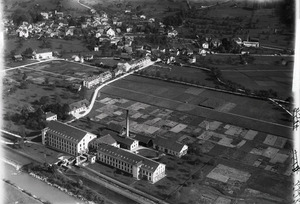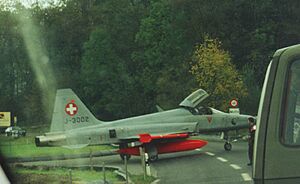Mollis facts for kids
Quick facts for kids
Mollis
|
||
|---|---|---|
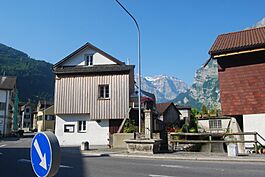 |
||
|
||
| Country | Switzerland | |
| Canton | Glarus | |
| District | n.a. | |
| Area | ||
| • Total | 21.83 km2 (8.43 sq mi) | |
| Elevation | 433 m (1,421 ft) | |
| Population
(December 2020)
|
||
| • Total | 3,337 | |
| • Density | 152.86/km2 (395.91/sq mi) | |
| Postal code |
8753
|
|
| Surrounded by | Ennenda, Filzbach, Näfels, Netstal, Niederurnen, Oberurnen, Weesen (SG) | |
Mollis used to be a town in the canton of Glarus in Switzerland. Since January 1, 2011, Mollis has been part of a larger town called Glarus Nord.
Contents
History of Mollis
Mollis was first mentioned in official records way back in the year 1288. This means it has a very long history!
Geography of Mollis
Mollis covers an area of about 21.8 square kilometers (which is about 8.4 square miles). A big part of this land, about 41%, is used for farming. Forests cover another large section, about 44.9%. The rest of the land is where buildings and roads are (8.2%), or it's made up of things like rivers, glaciers, or mountains (5.9%).
The town is located on the right side of the Linth valley. It stretches from the Linth Canal and Walensee (a lake) all the way to a stream called Schlattbach. Mollis includes the main village and smaller settlements. These include the hamlets of Beglingen, which is up on the Kerenzerberg mountain, and Mullern, an alpine settlement.
People of Mollis
In 2010, Mollis had a population of 3,337 people. About 12.1% of the people living there were from other countries in 2007. Over the past ten years, the number of people living in Mollis has grown by about 4.6%.
Most people in Mollis speak German (90.8%). Italian is the second most common language (2.8%), and Albanian is the third (1.9%).
Many adults in Mollis (about 73.4% of those aged 25-64) have finished high school or gone on to higher education, like university.
Mollis has a low unemployment rate, which means most people who want to work can find jobs. In 2005, many people worked in farming (154 people). Others worked in manufacturing or construction (384 people). The largest group worked in service jobs, like shops, offices, or healthcare (500 people).
Here's how the population of Mollis has changed over time:
| year | population |
|---|---|
| 1554 | 440 |
| 1701 | 1,150 |
| 1799 | 1,654 |
| 1850 | 2,041 |
| 1900 | 1,912 |
| 1950 | 2,191 |
| 1970 | 2,628 |
| 2000 | 2,974 |
Transportation in Mollis
The Näfels-Mollis railway station is on the train line that goes from Ziegelbrücke to Linthal. You can catch trains here that connect to Zürich and Rapperswil. Trains usually come once an hour, so you can get two trains per hour between Ziegelbrücke and Schwanden. There was also a train station called Weesen railway station in Mollis, but it is no longer used since 2013.
Mollis used to have a military airfield. The Swiss Air Force used to fly jet fighters like the de Havilland Vampire and F-5E jets from here until 1999. After that, it was a base for helicopters like the Super Puma. The aircraft were kept safe in special shelters, and the control center was hidden inside a mountain!
Today, the airfield is no longer used by the military. It is now used for civilian purposes. Companies like Heli Linth and Rega (air rescue) (a helicopter air rescue service) use the airfield every day. The very first "Flugtag" (Air Show) happened here in April 1923. That's when Walter Mittelholzer made the first landing at Mollis and even took passengers for flights!
Famous People from Mollis
- Heinrich Glarean (born in the 1500s) was a music expert and scholar. His father worked on the town council of Mollis for 40 years.
- The astronomer Fritz Zwicky, who was born in Bulgaria, is buried in Mollis.
See also
 In Spanish: Mollis para niños
In Spanish: Mollis para niños




